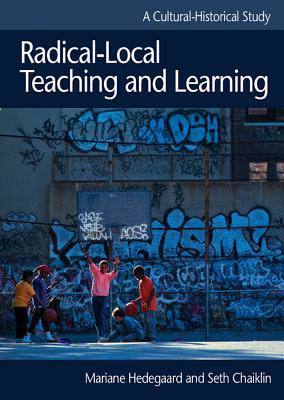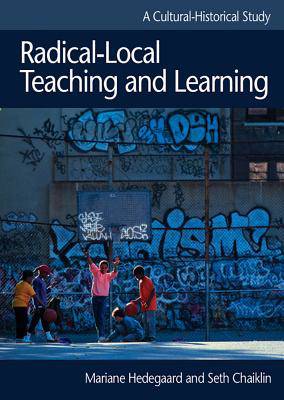
- Afhalen na 1 uur in een winkel met voorraad
- Gratis thuislevering in België vanaf € 30
- Ruim aanbod met 7 miljoen producten
- Afhalen na 1 uur in een winkel met voorraad
- Gratis thuislevering in België vanaf € 30
- Ruim aanbod met 7 miljoen producten
Zoeken
€ 31,95
+ 63 punten
Omschrijving
The cultural-historical approach started in the 1930s by Lev Vygotsky, who held that learning and instruction are the means to development, is the foundation for the Radical-Local Theory of Teaching and Learning formulated by Mariane Hedegaard and Seth Chaiklin in the first part of the book. The central concern in this approach to education is how to integrate particular historical and cultural conditions that the children encounter into educational practices. The second half of the book is an extensive case study of an after-school programme for Puerto Rican primary students in East Harlem, New York conducted in a radical-local perspective. This programme focussed on the history of the community and of Puerto Rican immigration, and the study describes how it helped students become both more positive and more critical about their backgrounds. By acquiring basic academic skills in a theoretical framework the children learn how to analyse their own local situation, addressing not only immediate issues (housing conditions, family life, community dynamics) but also historical issues. Unlike apparently similar culturally responsive approaches to teaching underprivileged children, radical-local teaching explicitly uses subject matter teaching to encourage children's development in relation to their social conditions. Hedegaard and Chaiklin detail how they developed concrete lesson plans in a radical-local perspective, and enumerate the accomplishments as well as the difficulties they encountered in implementing this approach.
Specificaties
Betrokkenen
- Auteur(s):
- Uitgeverij:
Inhoud
- Aantal bladzijden:
- 250
- Taal:
- Engels
Eigenschappen
- Productcode (EAN):
- 9788772888293
- Verschijningsdatum:
- 1/02/2005
- Uitvoering:
- Paperback
- Formaat:
- Trade paperback (VS)
- Afmetingen:
- 171 mm x 241 mm
- Gewicht:
- 498 g

Alleen bij Standaard Boekhandel
+ 63 punten op je klantenkaart van Standaard Boekhandel
Beoordelingen
We publiceren alleen reviews die voldoen aan de voorwaarden voor reviews. Bekijk onze voorwaarden voor reviews.











